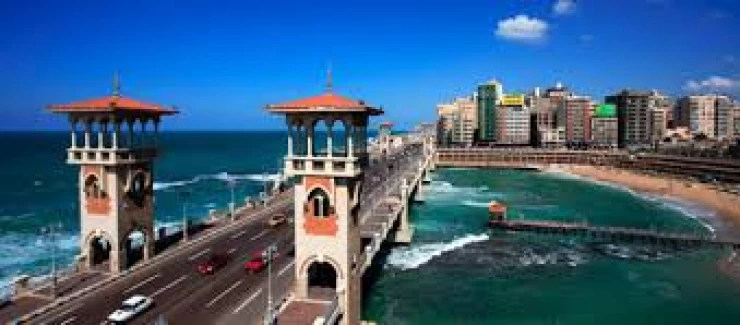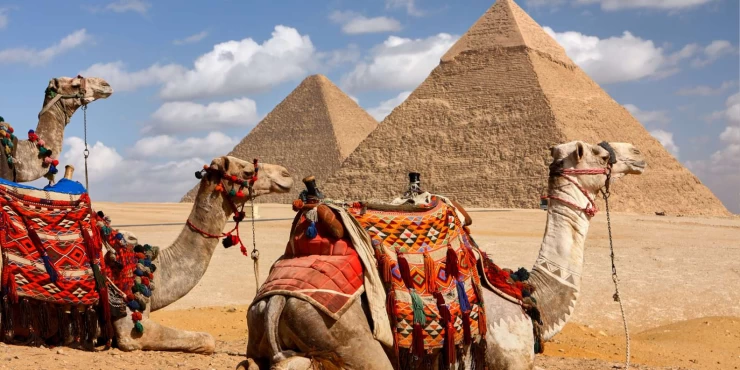Following breakfast, your driver and guide will take you to Alexandria. Our driver will let you pull over at the rest area so you may eat and stretch your legs. Kom El Shoqafa will be the first stop. The evolution of tombs:
The fragments of discovered tombs represent the types of tombs common during this period:
1. Pits dug into rocks or underground, containing one or more deceased, and covered with sand and stones.
2. Tombs dug underground, containing Loculus niches, or Kline funerary beds on which the deceased was laid, on cushions.
3. The different methods of embalming in the Ptolemaic period:
Burning the deceased to store their ashes in vases
Mummification was like the Ancient Egyptians.
After visiting the cemetery and getting enough information, you will be transferred to Pompey's Pillar. Standing 30 meters tall and with a diameter of 2.70 meters at its base, Pompey's Pillar is one of the last ancient monuments still standing in Alexandria. It has withstood all invasions and all earthquakes. It is indeed an honorary column, but has no connection to Caesar or Pompey. It is three and a half centuries more recent.
The heart and soul of the BA, the libraries provide a space for all those in search of knowledge. In addition to the Main Library, it possesses six specialized libraries: the Arts and Multimedia Library; Taha Hussein Library for the Blind and Visually Impaired; the Children's Library; the Young People's Library; the Exchange and Archiving Section; and the Rare Books Section. It also includes the Bibliothèque Francophone, which is set up on the heels of an exceptional donation from the BnF.
Before lunch you will go to Qaitbay Castle . On the location of the lighthouse's remains, which fell after the 1303 earthquake, the Mamluk ruler El-Ashraf Qaitbay constructed Fort Qaitbay in 1477–1479. The eastern port's entry hasn't been safe enough ever since. To fill this gap in the city's defensive system, Qaitbay had a majestic keep built within a wall. This tower still stands, while the enclosure, entrance and courtyard were modified and restored many times: under the Mamluk sultan Qansouh el-Ghoury in the 16th century, then under the Ottomans and Bonaparte. His engineers carried out numerous surveys and levelled the Ottoman houses occupying the courtyard. You will be transferred to Cairo to catch your flight.



















